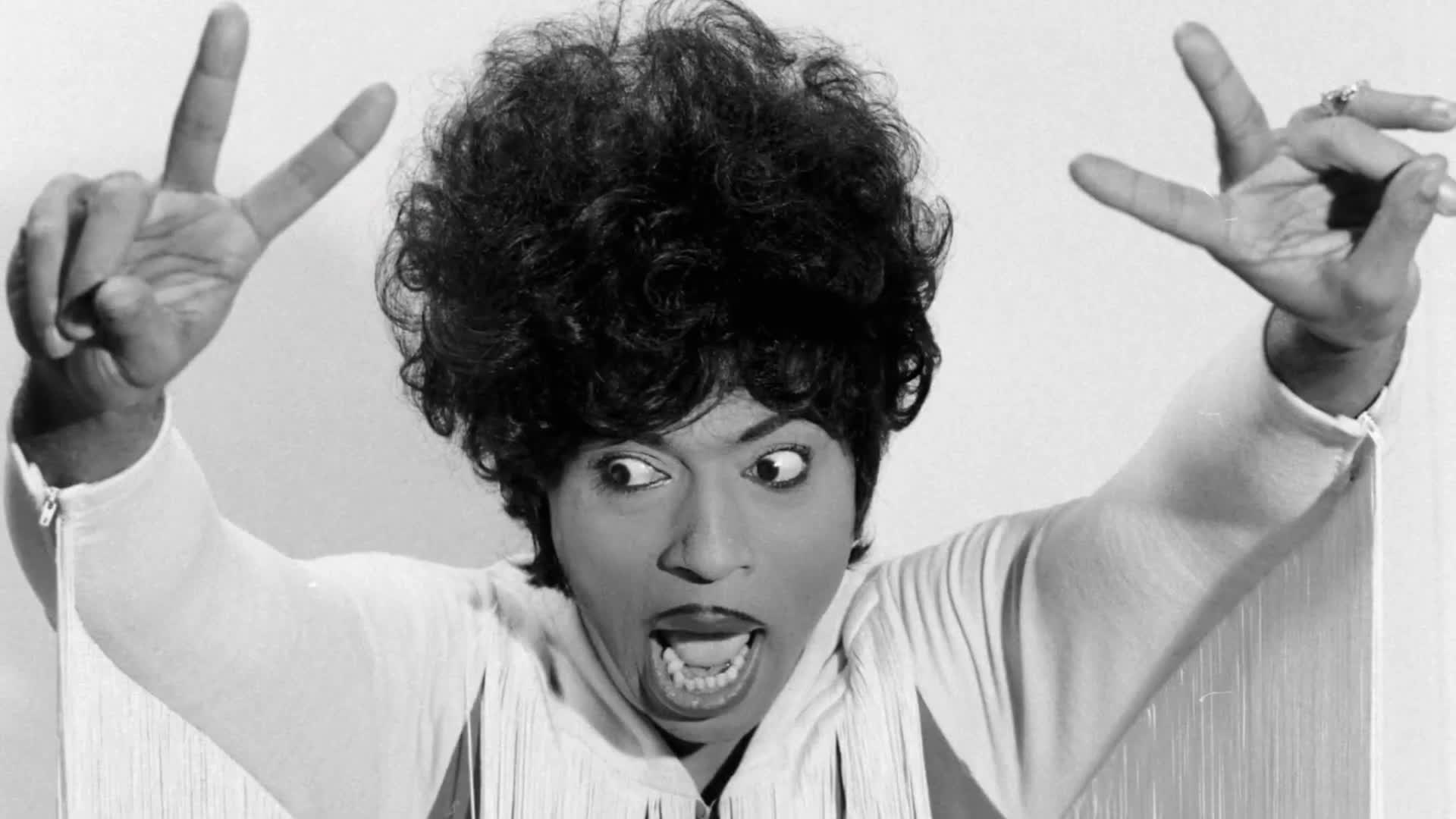Little Richard: I Am Everything
Sheila O'Malley
There are three key awards show moments in Little Richard's life, moments which explain the need for a documentary like Lisa Cortés' informative and emotional "Little Richard: I Am Everything." Little Richard died in 2020 at the age of 87, and the time is right to take a long look at the "architect," as he called himself. The legacy is huge, the influence gigantic, but the world moves so quickly now, racing past deaths like his, and while nice tributes are written, there is no time to take a moment and reflect on what we have lost, on what he actually accomplished.
The first "Little Richard Awards Show Moment" was at the 1988 Grammys, when he and Buster Poindexter (aka David Johansen, former frontman of the New York Dolls) presented the award for Best New Artist. Little Richard, resplendent in a shiny brown suit, glanced at Johansen's towering pompadour and declared, “I used to wear my hair like that. They take everything I get. They take it from me.” The audience laughed, but it was a little uncomfortable. Holding the envelope, he said, “And the best new artist is ... me!” The audience laughed, assuming he was joking. Little Richard was not joking. He went on, with passionate conviction: “I have never received nothing! Y’all ain’t never gave me no Grammy and I been singing for years. I am the architect of rock ‘n’ roll and they never gave me nothing. And I am the originator!” At the end of this, the audience leapt to their feet in a standing ovation. People barely remember Jody Watley's win as Best New Artist, but they remember Little Richard.
The second awards show moment was the 1989 induction of Otis Redding into the Rock 'n Roll Hall of Fame. Little Richard started off with a performance of Redding's greatest hits. Then followed the most extraordinary induction speech in the history of the institution. It's worth it to watch the whole thing. Little Richard knew Redding, and he speaks on that, but once again, he—a member of the first "class" of inductees—reminds the audience of his dominance and centrality.
The final moment is the most touching. In 1997, he was given the Merit Award at the American Music Awards. He was overwhelmed. The audience was overwhelmed. His band members were overwhelmed. He spoke, building to the climax like a preacher: "It's been a long time coming. I am the originator. I am the eMANcipator. I am the architect of rock 'n roll. Rhythm and blues had a baby, and somebody named it rock 'n roll."
These clips and more are peppered through "Little Richard: I Am Everything," along with riveting concert footage. There's an impressive roster of interview subjects, scholars, peers, and those he influenced and knew personally. Mick Jagger says, point-blank: "He was everything." John Waters, whose mustache is a deliberate "nod" to Little Richard, is voluminous on the man's example of rebellion and breaking down walls. Billy Porter is a crucial participant as a contemporary artist, saying, "He gave you permission to be who you wanted to be." These comments go way beyond the musical impact, which was considerable (Paul McCartney's bloodcurdling screams began as a teenage boy's attempt to sound like his idol). Lady Java, a 79-year-old nightclub performer and trans rights activist whose nightclub act Little Richard caught in the mid-'60s, leading to a lifelong friendship, is interviewed. She speaks of him with tenderness and shades in the nuances of Little Richard's complicated personality.
Jason King, Chair of the Clive Davis Institute of Recorded Music at Tisch, gives an essential perspective on Little Richard's cultural and social history and the artists who inspired him (Billy Wright, Sister Rosetta Tharpe, etc.). "He existed in contradiction," says King. These contradictions—the secular vs. the divine, the earthy vs. the spiritual, the sexual vs. the holy—waged war within Little Richard throughout his life, leading to multiple renunciations of his rock 'n roll self, his sexuality, flip-flopping back and forth between polar extremes.
Lisa Cortés uses the Big Bang as a visual motif throughout, with stars and galaxies exploding, hurtling out into the darkness. It is an apt analogy.
I'll let the late Nick Tosches, music journalist and biographer of Dean Martin and Jerry Lee Lewis, close this out. In 1971, he wrote a famous piece about George Harrison's Concert for Bangladesh held at Madison Square Garden. Tosches was unimpressed and irritated by the whole thing.
"I mean, does rock ’n’ roll have anything to do with anything? Once it adopts pretensions of meaningfulness outside that of a self-contained expression, matrical and flashing, doesn’t it become art or pop/kitsch? If not, how come all the psychedelic dreck of the last five years, in retrospect, can’t hold a candle, in terms of cosmic epiphany or plain old life energy, to Little Richard...? Little Richard, via his pure white-energy raunch and total over-simplification, had the power to make people say 'f**k it' and turn their backs on their own control conditioning and just go out and debauch and catch a glimpse of the violent, drunken, loving, dancing Universe."





